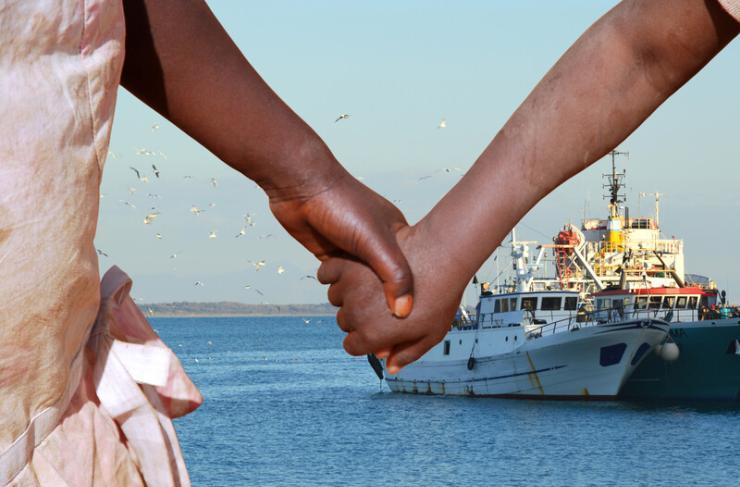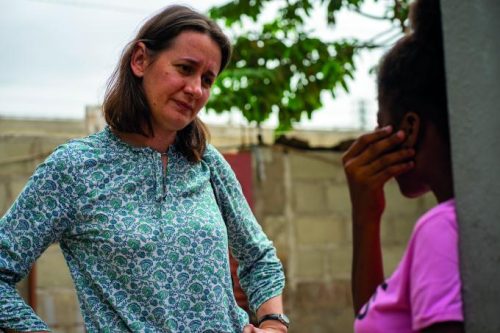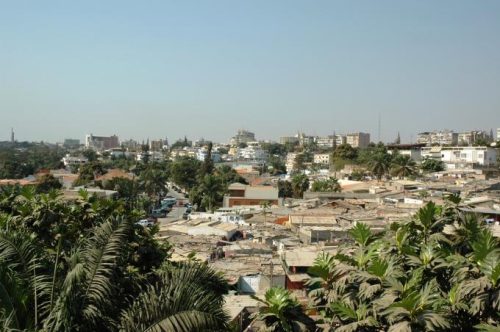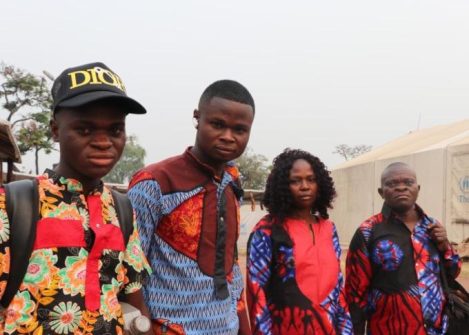Angola. A common home.

The Commission for the Pastoral Care of Migrants (CEPAMI) and other civil society organizations have been working for years to give a dignified life to the thousands of migrants and refugees
in the country.
“The fundamental objective of CEPAMI is that refugees and migrants should move away from anonymity and invisibility and there is always a community that is spiritually and socially prepared to welcome, protect, promote and integrate everyone, without distinction”, says Sister Carla Frey Bamberg, executive secretary of the Episcopal Commission
for the Pastoral Care of Migrants and Itinerant People of Angola
and São Tomé (CEPAMI).

Sr Carla Frey Bamberg, executive secretary of the Episcopal Commission for the Pastoral Care of Migrants and Itinerant People of Angola and São Tomé (CEPAMI). (Photo: José Luis Silván Sen)
Sister Carla, born in Paraguay but of Brazilian nationality, remembers how CEPAMI began in 2006 to promote, coordinate and animate the pastoral care of refugees and migrants and is today present in 19 Angolan dioceses and São Tomé.At the same time, Sister Carla Frey says that although CEPAMI is a commission of the Episcopal Conference of Angola and São Tomé, its management and financing are the responsibility of the Scalabrinian Missionary Sisters.Currently, the missionary is supported by a team of three people and in each diocese, there is a structure made up of a priest and a group of lay people. The missionary confirms that more than 350 migrant pastoral workers, scattered throughout the country, have been trained since 2006 to carry out this specific work.
Refugees and migrants
Angola currently hosts about 57,000 refugees and asylum-seekers. This population is largely composed of DRC refugees and asylum-seekers, out of which 17% came during the 2017 mass influx from the Great Kasai. Other nationalities also make up the population of concern to UNHCR across Angola, such as Guineans, Ivorians, Mauritanians, Somalis, Sudanese, and Eritreans, totalling about 50,000 living mostly in urban areas.The vast majority of refugees and asylum seekers live in the capital. CEPAMI organizes training courses and develops professional training projects in sewing, hairdressing, literacy, cooking and manicure for these people in three neighbourhoods of the city. Although women are the priority, young people at risk of falling into drugs or prostitution are also invited to participate.
More than 30% of the Angolan population live on less than a dollar a day, but refugees and asylum seekers are, according to the Scalabrinian missionary, “more vulnerable than the rest of the local population, because they are undocumented and invisible to Angolan institutions”.

View of Luanda. The vast majority of refugees and asylum seekers live in the capital. File swm
Sanzala is a neighbourhood of Luanda where many refugees are concentrated, mostly Congolese, but also Burundians and Rwandans, and many of their children do not receive an education. Ângela Maria Paulo Osório, a Rwandan born in Angola and coordinator of CEFAMI activities at the refugee centre, said that one of the priorities is education and this has meant that many refugee children have been able to enter public schools with a good knowledge base.”
CEPAMI’s work within the country also focuses mainly on raising awareness through conferences and training workshops related to human mobility, to which, among others, public officials, educators and university students are invited. The convocation takes place on behalf of the Church and, thanks to the cordial relationship that CEPAMI maintains with the Secretary of State for Human Rights, Ana Celeste Cardoso, there is always active representation of the Government. Since she arrived in Angola just over a year ago, Sister Carla Frey has participated in conferences and seminars in 11 dioceses. For the Scalabrinian missionary, these activities are possible “thanks to the formidable commitment of the lay people who work in the field and who provide the necessary information, even on delicate and serious issues that we denounce, such as human trafficking”. She adds: “We know that the sale of children and human organs is increasing dramatically in Angola, which worries us greatly.”
Synergy
To join forces, in 2016, CEPAMI promoted the creation of the Angolan Network for the Protection of Migrants and Refugees, which brings together various ecclesial organisations – the Jesuit Refugee Service and the Episcopal Commission for Justice and Peace – , international organisations – the UNHCR – and Angolan civil society organisations – the OMUNGA Association, specialised in the defence of human and cultural rights. Together, they are working to broaden the scope of action in the protection of migrants and refugees.
The network meets regularly to reflect on and report concrete situations to the competent institutions.

Congolese refugees in Angola. The country currently hosts about 57,000 refugees and asylum-seekers. UNHCR/Lina Ferreira
One of the initiatives of interest is that every year, at the end of September, the immigration fair is organised, a cultural festival in which, in addition to the various refugee communities, Angolan and foreign businessmen participate. Each group or country has a booth where they display their music, food and other manifestations of their culture. “On that day, everything is shared – says Sister Carla – everyone tastes food from all over the world and no one goes hungry, it’s a very interesting cultural activity.”Another important event is a reflection conference, held every year in October. Members of the Government and various embassies participate in the meeting, but especially representatives of the various refugee and immigrant communities in Angola.
The purpose of these meetings, as Afonso Pedro Chamangongo, of the Episcopal Justice and Peace Commission, says, is to “help break down barriers and create links between institutions and refugees”. (Open Photo: canstockphoto)
Enrique Bayo



